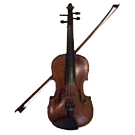

 |
MusiCAD offers a heap of accompaniment features to help you arrange or let you verify used harmonization by just listening.
Autmatic accompaniment
Whenever you have placed chord symbols with your melody line (as most lead sheets do), together with the tune's meter, repeat signs and manual bar lines, MusiCAD has enough information to supply you with some basic accompaniment parts. As soon as chord symbols are detected in the main melody part, MusiCAD will add automatic bass line and automatic chord line during playback. All automatic parts are not visible by default. However, you could view and/or edit them as you feel fit. Use the score dialog to select parts to be visible or hidden.
Chord based voices
Apart from the automated chord- and bass line, you can instruct MusiCAD to add broken chord line, simple piano accompaniment and other parts using the new part dialog
Chords
![]() Chords
on beat (1 and 3)
Chords
on beat (1 and 3)
![]() Chords
on afterbeat 2 and 4
Chords
on afterbeat 2 and 4
![]() Chords
on any beat
Chords
on any beat
![]() Double
chords on afterbeat
Double
chords on afterbeat
![]() Double
syncopated chords on afterbeats
Double
syncopated chords on afterbeats
Harmony
![]() Arpeggio
(broken chords)
Arpeggio
(broken chords)
![]() Fast
arpegio
Fast
arpegio
![]() Alternative
arpeggio 1 to 6
Alternative
arpeggio 1 to 6
![]() Bass
line
Bass
line
![]() Piano
accompaniment
Piano
accompaniment
![]() Chord
fundamentel note
Chord
fundamentel note
Non chord based
It is easy to use MusiCAD to add some basic parallel second voice part like a third, sixth or octave above or below. The original melody line is copied and inserted as new part wihin your score (or even within the current voice, adding notes to sticks).
Percussion
Other possibilies include a basic part for drums or one or more simple percussion parts which can (and most of the time you should) be edited to suit your needs.
See alse:


